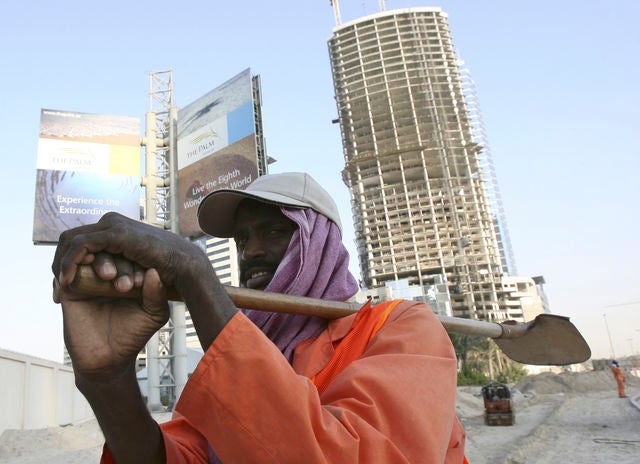COVID didn't kill off remittances – which is good news for health outcomes
The pandemic has demonstrated that remittances are resilient and reliable, which is good news for health outcomes
COVID didn't kill off remittances – which is good news for health outcomes

When the COVID pandemic began, many people believed that thousands upon thousands of migrant workers would return to their homelands and inadvertently choke off millions in remittances to low- and middle-income countries (LMICs). Instead, recent research has found that such workers largely stayed put, which is good news for health outcomes in these countries.
Surprising data from the World Bank's Global Knowledge Partnership on Migration and Development (KNOMAD) shows that migrant workers continued working where they could, cut back on their spending and drew from their savings to continue to support their families back home. As a result, remittance flows to LMICs totaled $540 billion in 2020. That is just 1.6 percent below the 2019 total of $548 billion, according to KNOMAD's latest Migration and Development Brief released in May.
No longer chump change, remittances are poised to fully recover from this small pandemic dip – the World Bank expects them to reach an all-time high of US$565 billion in 2022. Having outpaced foreign direct investment and overseas development assistance in LMICs (excluding China), remittances can be expected to continue to exert a positive influence on health outcomes in some countries, experts say.
For example, Exemplars in Global Health research has found that remittances have served as a powerful driver of childhood stunting reduction in three countries: Kyrgyz Republic, Nepal, and Senegal.
The Kyrgyz Republic’s experience with remittances demonstrates their power. Estimates of the number of Kyrgyz migrants range from 200,000 to one million annually – from a country of just 6.5 million. By some estimates, 20 percent of working age Kyrgyz are working abroad. Today, the remittances these migrants send home equal to about one third of the country’s GDP – one of the highest remittances-to-GDP ratios in the world. Studies have repeatedly demonstrated that migrants’ families tend to use remittances to buy essential goods, including health care and food. Over the past two decades, these remittances have served as a growing buffer against poverty and food insecurity. This helped drive a decline in childhood stunting from 36 percent in 1997 to 12 percent in 2018.
Remittances impact stunting in three key ways:
- They inject cash into households to improve access to food. Research in the Kyrgyz Republic and beyond indicate that it isn’t the poorest household who are benefiting from remittances because it often takes resources (financial and social connections) to successfully migrate. “But even if the poorest households only get 10 percent (3 percent of gross domestic product) of the remittances flowing into the country, that is a much bigger amount than current levels of government assistance to the poor,” said Roman Mogilevskii, Associate Director of and Senior Research Fellow at the Institute of Public Policy and Administration, University of Central Asia.
- Remittances also improve local knowledge and resources. They can expand a family’s understanding of good nutrition and can expand access to nutritious food or medicine that may not be available locally. For example, during the COVID pandemic Mogilevskii said, researchers in Kyrgyzstan were surprised to find medicines that were in extremely short supply across the rest of country in a remote village. When they inquired about the medicine, they were told that migrants working abroad had sent the medicines back home to family members and the community.
- Remittances put more money in the hands of women in many geographies like Kyrgyz Republic, where the overwhelming majority of migrants workers are men. Research shows that women tend to channel more household resources to support their children’s health and education.
“Before the COVID pandemic,” said Mogilevskii, “many international experts worried that remittances were fragile. That they might collapse and devastate economies like Kyrgyzstan which is reliant on them. But COVID shows that remittances are, like the migrants themselves, resilient and reliable.”
While no one is suggesting that countries establish a goal of sending increasing numbers of their people abroad to reduce poverty and improve health outcomes, there are policies governments can adopt to maximize the benefits of remittances.
For example, Mogilevskii said, government programs can be designed to complement the flow of remittances. “They can target urban households having access to informal labor market only and the poorest of the poor who are not well-positioned to migrate and benefit from remittances,” he said.
Dilip Ratha, who leads KNOMAD at the World Bank, has written that “quick actions that make it easier to send and receive remittances can provide much-needed support to the lives of migrants and their families. These include treating remittance services as essential and making them more accessible to migrants.”
For example, the World Bank notes that the global average cost of sending US$200 is quite high – 6.8 percent (data from the first quarter of 2020). But the cost in sub-Saharan Africa was highest – about nine percent. And sending US$200 to many communities in southern Africa can cost as much as 20 percent. Governments can support policies and programs that bring down the cost of these transactions and ensure a larger percentage of remittances end up in the pockets of the people who need them most.
